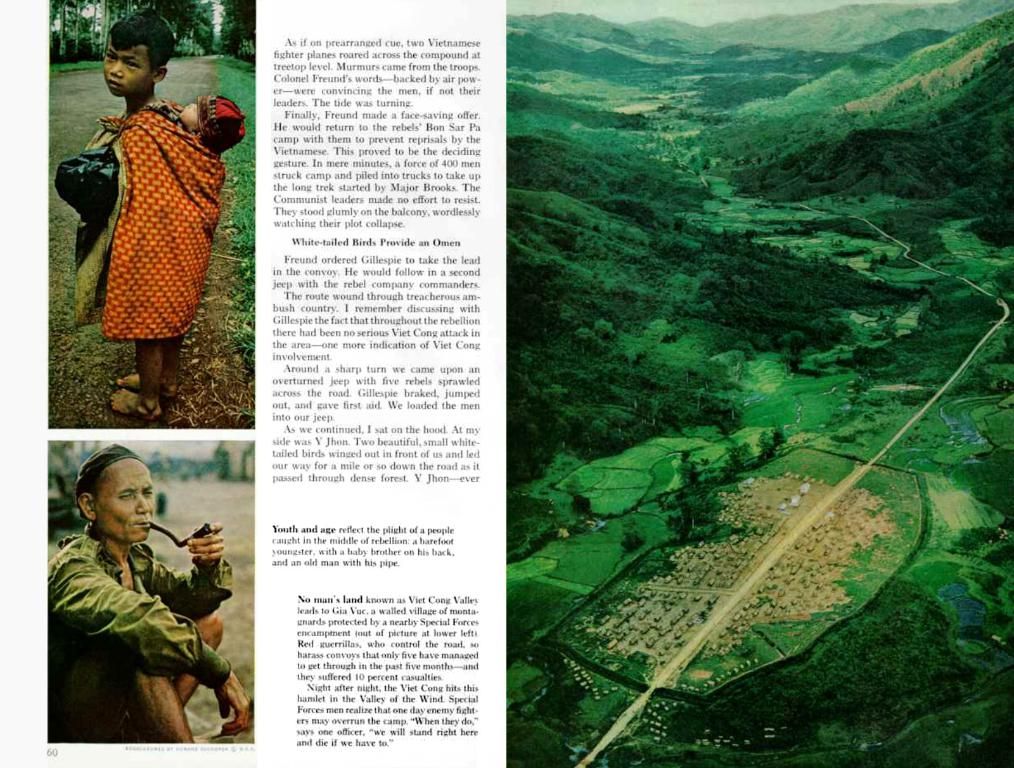India's Phenomenal Poverty Reduction: 171 Million Lifted from Extreme Poverty
Dramatic Drop in India's Severe Poverty Rate: From 27.1% in 2011-12 to 5.3% in 2022-23, According to World Bank Report
India has witnessed an astounding decline in its poverty rates, as per World Bank and affiliated data. Over the decade between 2011-12 and 2022-23, the extreme poverty rate has plummeted from 27.1% to a mere 5.3%. India lifted a staggering 171 million people out of extreme poverty during this period, making it one of the most significant reductions in poverty worldwide.
In contrast, Pakistan's poverty rate remains high, with nearly 45% of the population living in poverty, and 16.5% classified as living in extreme poverty. The World Bank's projections suggest that Pakistan's poverty rate will remain at 42.4%, with an estimated 1.9 million additional people expected to fall into poverty in 2024-2025. The reasons for Pakistan's slower progress are complex, with a population growth rate of nearly 2% annually and a 2.6% economic growth rate that is deemed insufficient to reduce poverty.
The agriculture sector in Pakistan faces considerable challenges, as weather conditions deteriorated in 2025 with a 40% reduction in rainfall, along with pest attacks and shifting production choices. Crop yields are projected to decline for major crops such as cotton and rice, which may limit sectoral growth to under 2%.
India's success in poverty reduction can be attributed to rapid economic growth, targeted social policies, and improved access to basic services. India's actions are set to inspire other developing countries to strive for similar improvements in poverty reduction.
In summary, India has managed to reduce its extreme poverty rate by more than half over the last ten years, while Pakistan has yet to make comparable progress. Improving agricultural conditions, economic policies, and social investments are crucial for Pakistan to follow in India's footsteps and achieve sustainable poverty reduction.
Enrichment Data:
Based on the data, rapid economic growth, targeted social policies, and improved access to basic services have played significant roles in India's poverty reduction. Pakistan faces difficulties due to more challenging weather conditions, pest attacks, and shifting production choices impacting its agricultural sector and thus hindering poverty reduction.
Sources:1. World Bank, PovcalNet, World Development Indicators: https://databank.worldbank.org/source/world-development-indicators2. Livemint (India): https://www.livemint.com/policy/economy3. The Indian Express: https://indianexpress.com4. Dawn (Pakistan): https://www.dawn.com/news5. CGIAR (Consultative Group for International Agricultural Research): https://www.cgiar.org6. World Bank South Asia Region: https://www.worldbank.org/en/region/southasia
- The phenomenal reduction in poverty in India can be attributed to a combination of rapid economic growth, targeted social policies, and improved access to basic services, which have set an example for other developing countries to follow in achieving similar improvements.
- In contrast, Pakistan's slower progress in poverty reduction can be partially attributed to the challenges faced by its agricultural sector, including weather conditions, pest attacks, and shifting production choices, which have hindered sectoral growth and, by extension, poverty reduction.
- The international community should closely monitor and engage in policy-and-legislation discussions to support developing countries in improving their economy, business, and culture, with the aim of reducing poverty and aiding sustainable development. General news outlets and organizations, such as the World Bank, CGIAR, and regional bodies, can contribute valuable insights and reports into these crucial matters.







